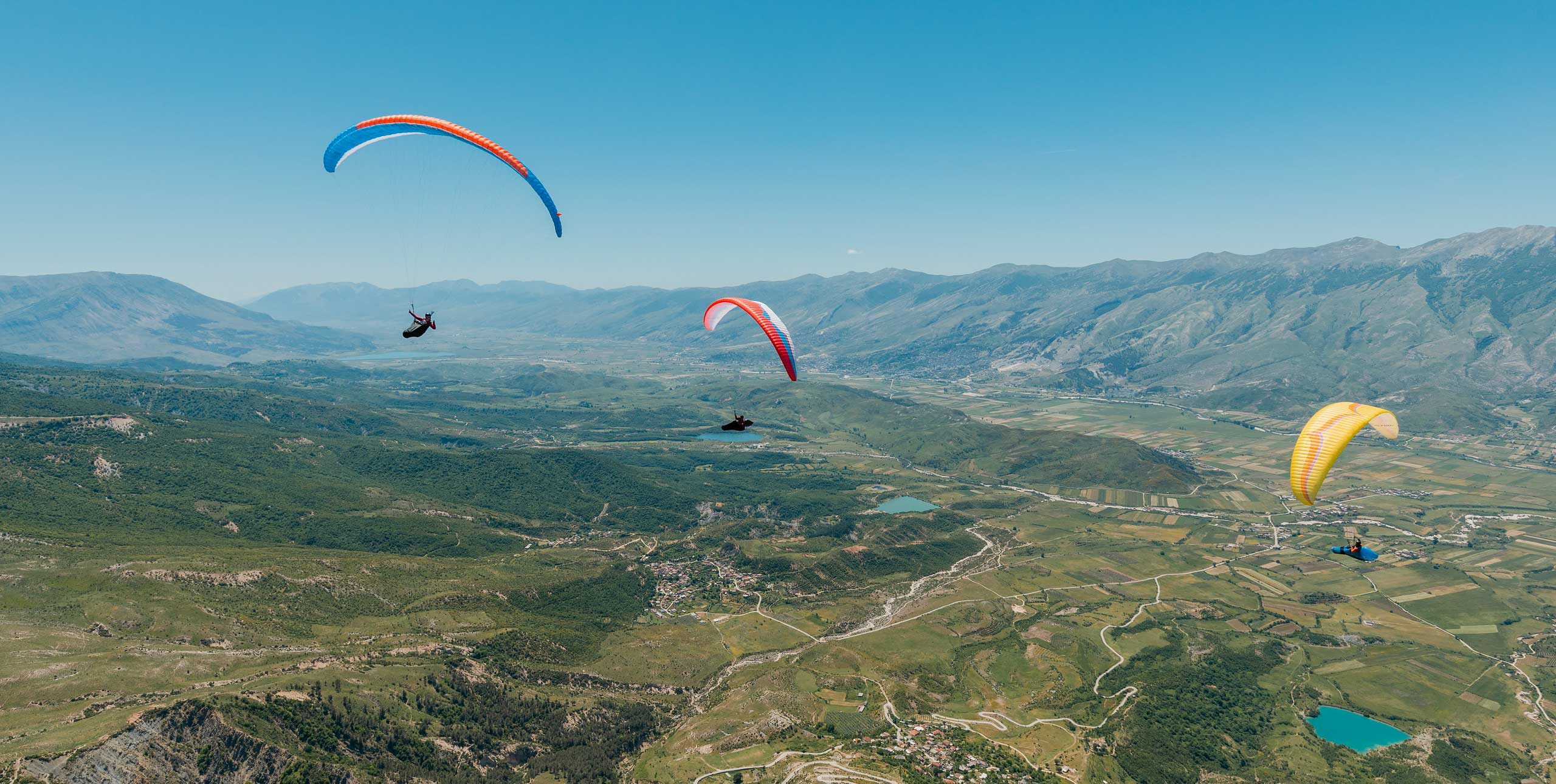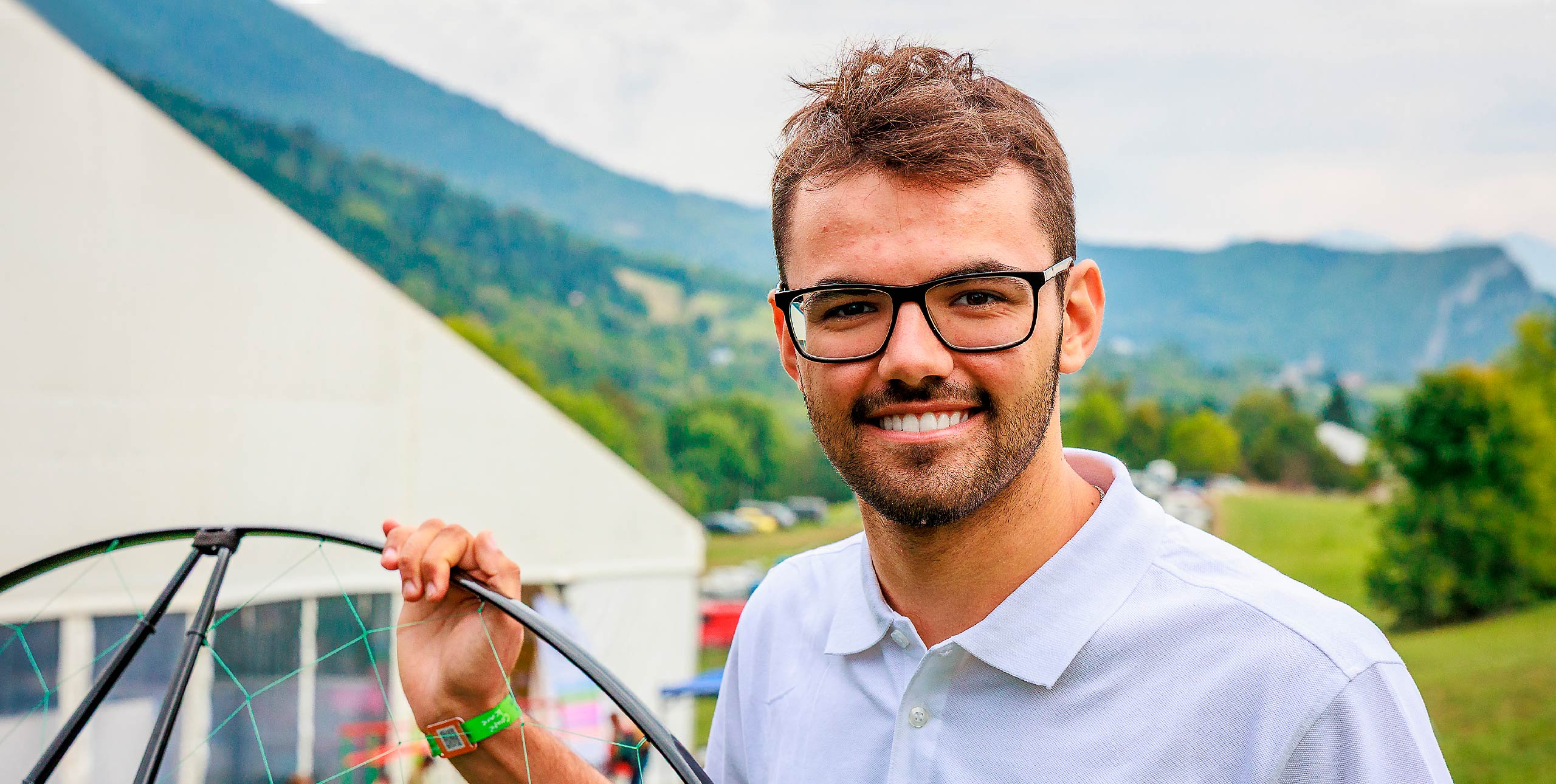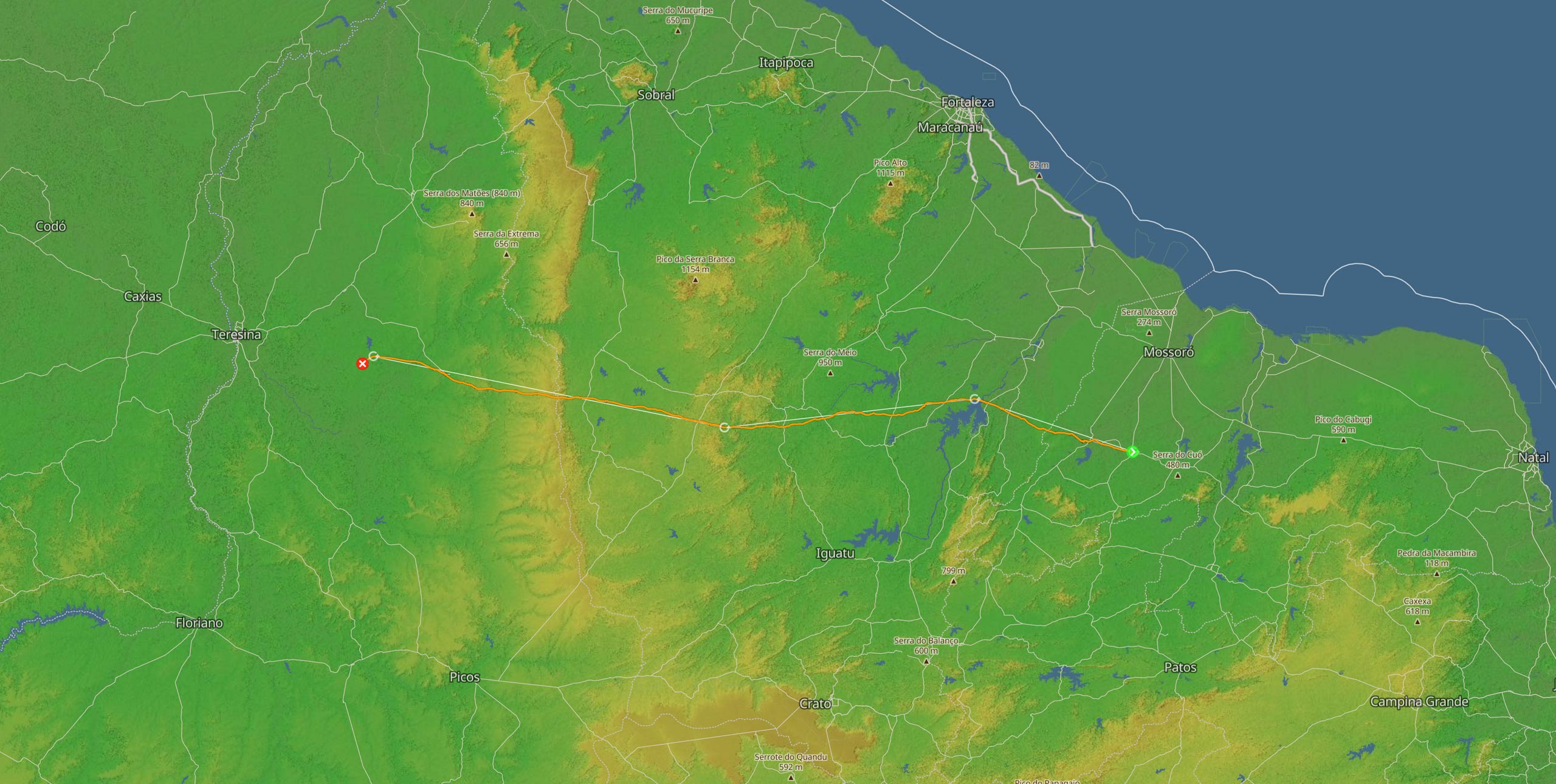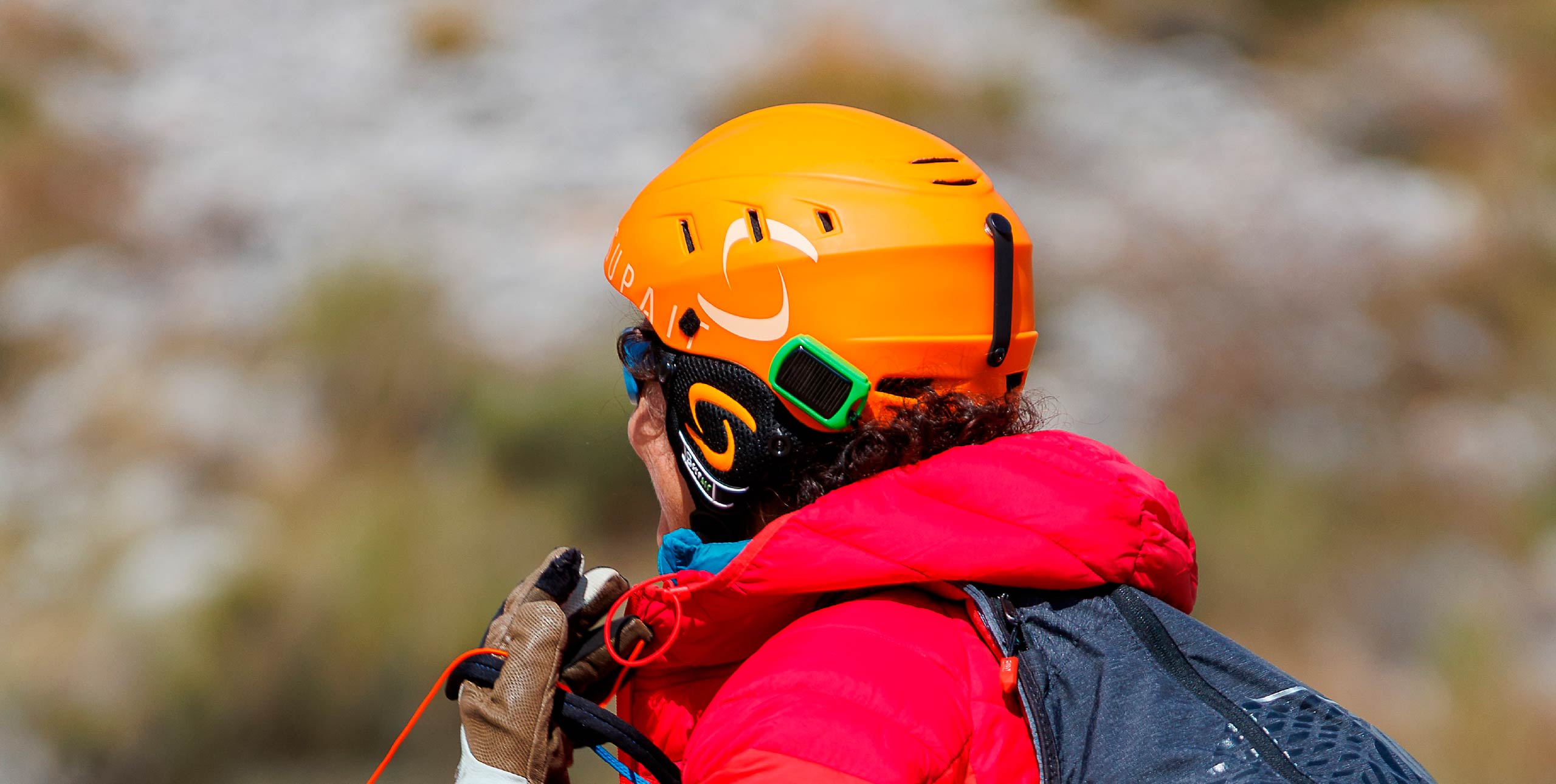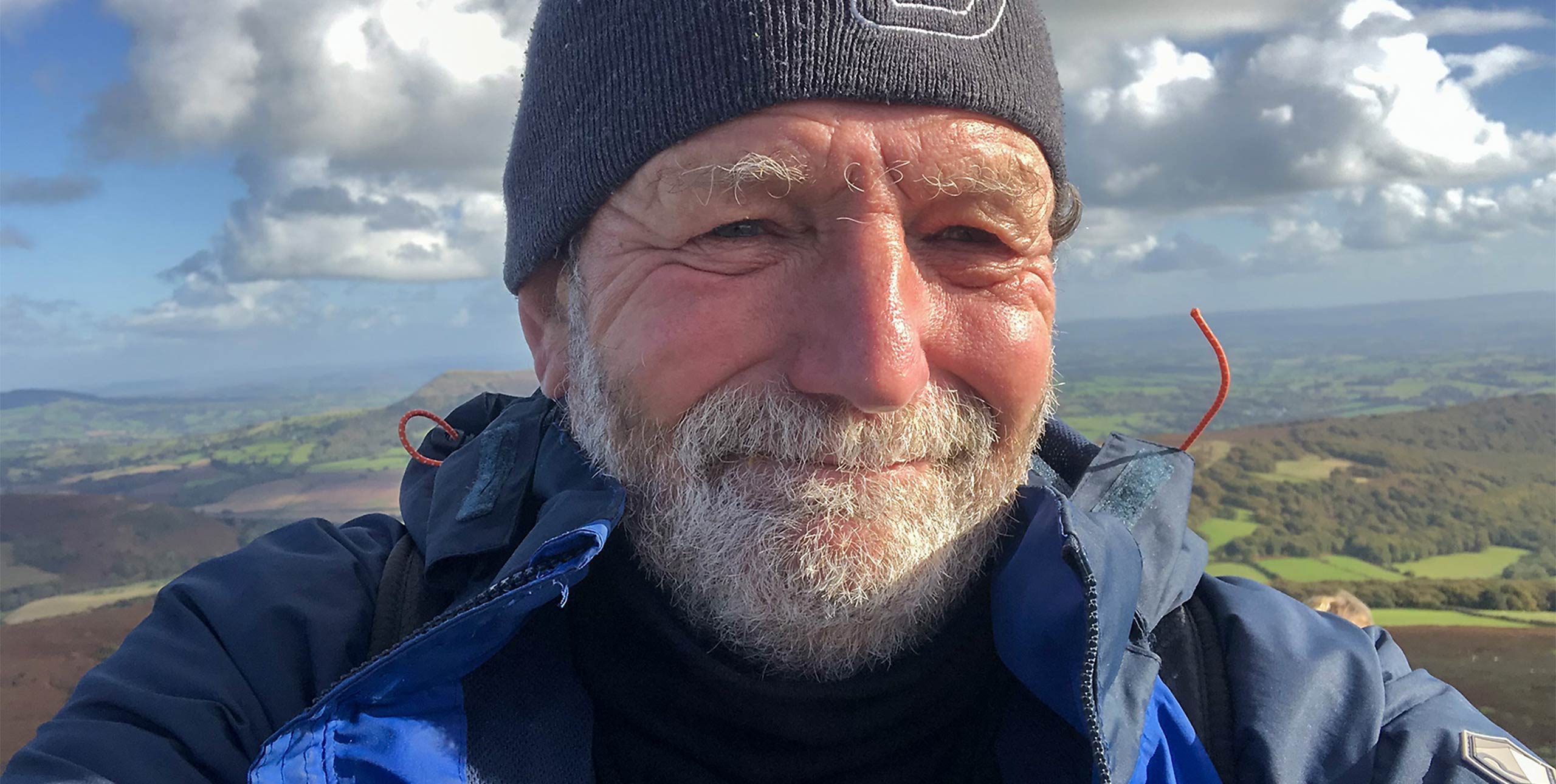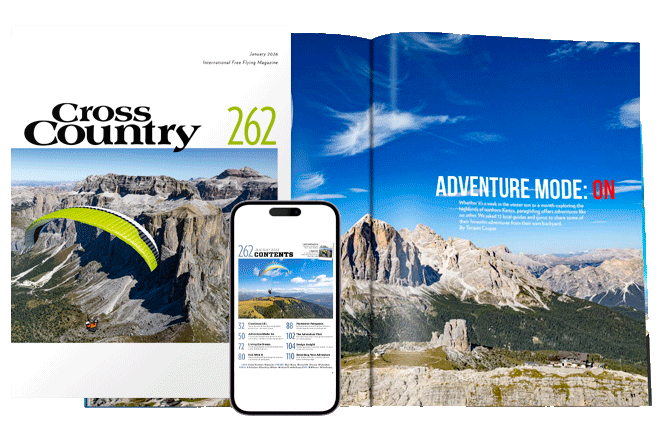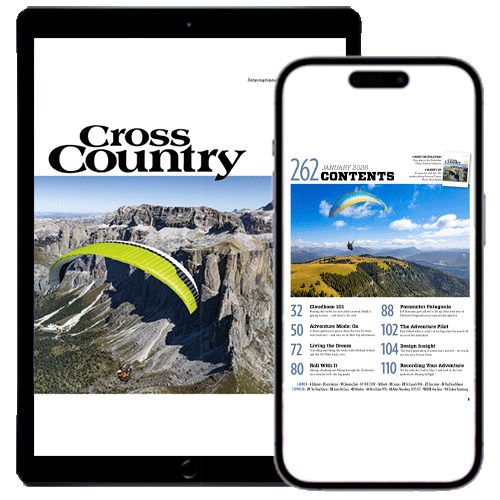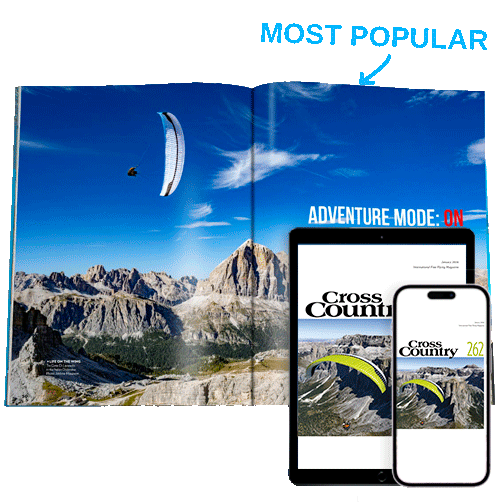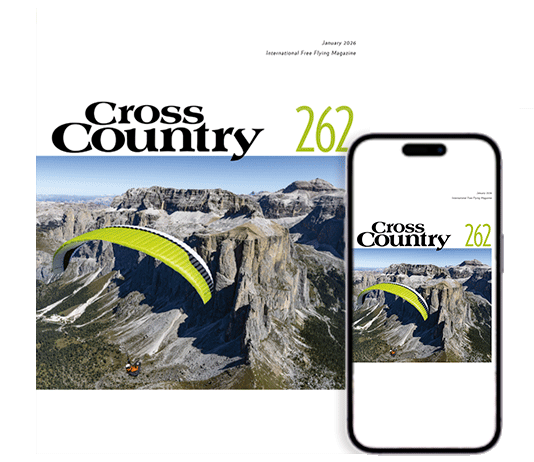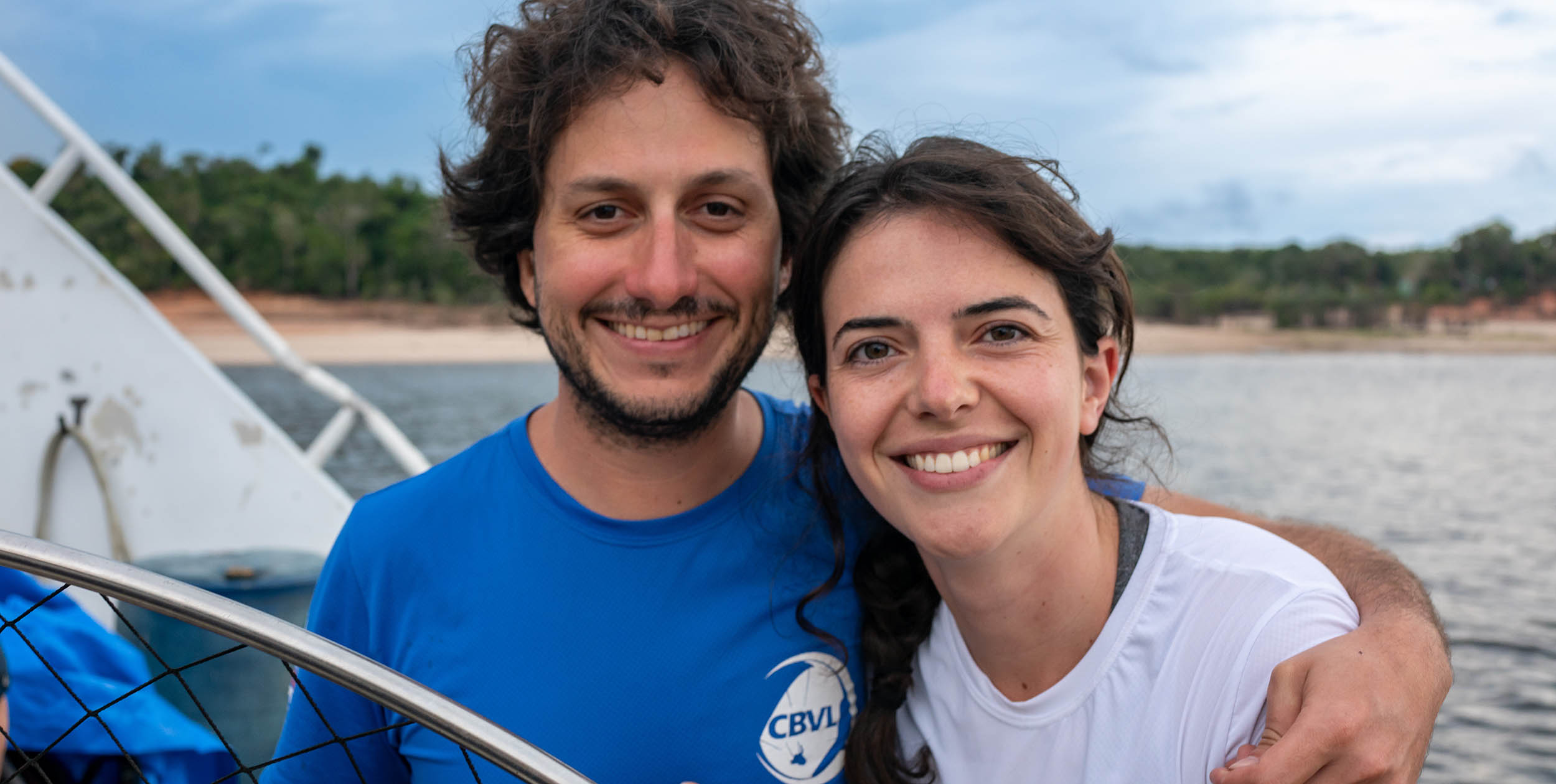
Raphael Laghi is a paragliding and paramotoring guide in Brazil. As featured in Cross Country 238 (April 2023), in an article by Jeff Hamann about his 1,000km flying expedition along the Rio Negro, Raphael is a specialist in flying the remote regions of the Amazon by paramotor. We found out more about Raphael and his partner Marília Reis
Raphael, this trip that Jeff organised that we feature in Cross Country 238 just looks incredible, the photographs are amazing – works of art. Jeff is known for his big adventures, but this one looks really out there. Can you tell me first how he came to contact you to act as his guide?
We were put in contact through an old friend of Jeff, Luke Kanagy, who lives in Brazil and also went on the trip. Jeff contacted him in order to help him organise a trip on the Black River. After Luke learned about the complicated logistics involved in doing that, he started searching if someone has ever done this, that’s when he found us.
Can you explain a little about what you do? Where are you based, where do you usually guide, for example?
We run a paramotor and paragliding company that is focused on flying trips around Brazil and organise the trips so that pilots can fly worry-free. We offer retrieve, flight guides, airport pickup, everything. Based in southeastern Brazil we offer these trips wherever the season is good in our country.
You have a flying company – what’s the history of that? How long have you been flying and guiding?
My father’s side of the family, the Laghis, have been pioneers of free flight in Brazil, they were part of the group that started hang gliding and paragliding/paramotoring there. So I started flying in 2011 and in 2015 I started teaching. After a few years teaching, I realised that a big part of a pilot’s evolution happens when he or she is flying in new locations, that is one of the reasons why we started focusing on flying trips. So a few years ago, me and Marilia, my wife, started focusing our energy in organising those trips.
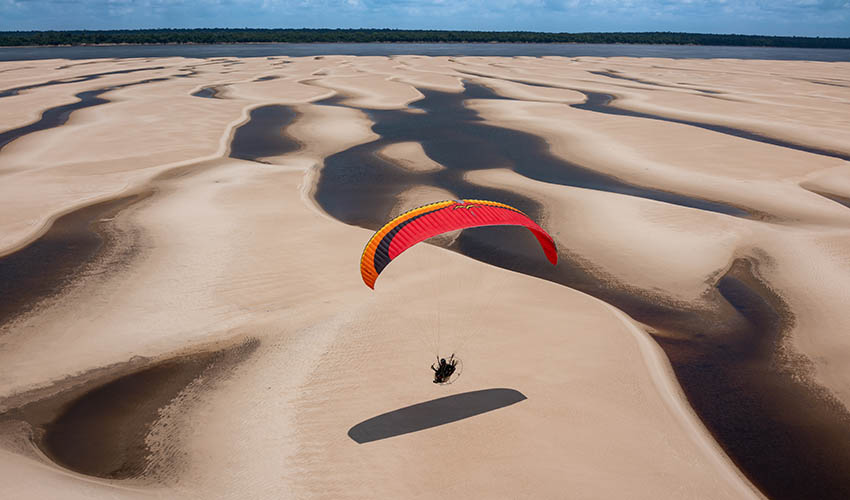
Had you flown in the Amazon region and Rio Negro before? If so, when? Can you tell me a little about it…
In 1996 my family and I moved to the Amazon and it was impossible to hang glide or paraglide there. There were no hills and mostly rainforest everywhere. My father started straight away to experiment with fly trikes and fly-boats (the latter you take off and land on the water). A few years later he started paramotoring, and that proved to be the best way to fly in the region, with easy take offs and landings on the river margins during the dry season.
At first we were always flying locally, on the sand beaches near the city, but once we got a boat we started “expanding our map”. From 2011 onwards we annually did expeditions, each time to a different tributary of the Amazon river: Black River, White river, Tapajós, Xingu, Arapiuns, among others. From what I know, we are the only paramotor pilots in the world to ever have done that!
Jeff says you spent months setting up this trip. I can believe it. Can you tell us a little bit about the logistics involved in the preparation?
To prepare an expedition like that you must remember you are leaving the city on a boat with 20 people and it’s not like you are gonna find a Walmart upriver, so from drinking water to paramotor maintenance tools, everything you will need for the next 10 days must be onboard. The resulting volume of stuff you are carrying is insane. Setting up a team of 12 people is also a challenge of its own.
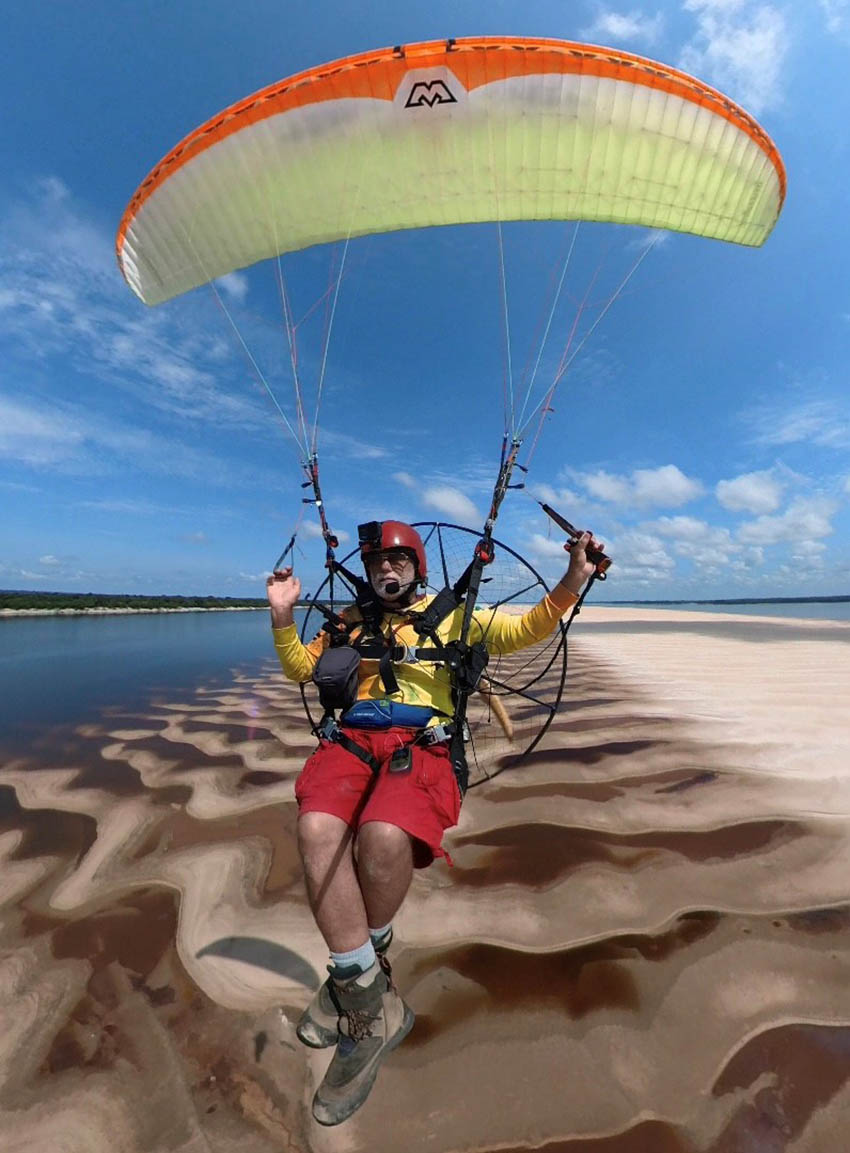
Then there is fuel! Gasoline in Manaus is not reliable to be used in our paramotors, we only use AvGas. Buying 1,200 litres of it was a process that took four months of paperwork and back and forth with several Brazilian institutions.
All in all, we started planning the trip around six months before, then we arrived in Manaus two weeks before to set everything up, and finally we spent two full days loading the boat and preparing it for the trip.
Why did you go in October?
The water level varies greatly on Amazon rivers throughout the year; the difference between the lowest and highest water level is 15 metres. So you can think of a completely flooded forest in June giving space for great expanses of white sand beaches in October. Sand bars change location each year, so we had an assistant to the captain, someone who really knows how to get around and has the expertise of navigating these shallow waters.
Can you describe what the daily weather cycle is like in the Amazon? When is it best to fly, for example? I guess it rains a lot…
We take off in the morning to take advantage of the calmer air and absence of rain clouds. At noon, since there is not a great temperature difference between the ground and the higher levels of the atmosphere, the thermals tend to be gentle. During the dry season, if you look around the horizon you will see rain every day, but it is very sparse, one cumulus here, another there; normally it is not a big storm as it happens during the wet season. So most of the time we can fly around a rain cloud.
The obvious flying question is where do you launch and land from? I get that you launch from a sandbar, but how do you know where you will land? Did you scout them out? Or are there known sandbars that are always there at this time of year?
We launch and land on the sand beaches that appear when the river is low, and they are quite spacious. During our briefing, we explain where we will all land, and put that waypoint on everyone’s GPS. If anyone lands at an unexpected place, one of our guides will land with him, and we have our fast boats retrieve them. All pilots fly along the river margins and we fly close by, for accidentally landing 2km into the forest is not an option. Luckily, the most beautiful scenery is precisely where the forest meets the water.

The second obvious question is how did you manage the safety issue? I mean… engine out and it’s in the Rio Negro and goodbye. What was the plan? Do you have a safety boat? One or two? How do you brief the flight? Does everyone has to stay together, or can they choose their own route? It’s really out-there stuff…
We require that all pilots fly with a floating device, as we fly over water all the time. There is satellite internet on the boat and we require that everyone flies with a tracker like spot or inReach. We also fly within sight distance from each other, so our guide is always aware of each pilot’s position. If the group splits in two, each of the guides stays with one gaggle.
To avoid engine failures, a paramotor mechanic is part of our team and he brings a great deal of spare parts with him. Still, we ask that all pilots beware of their flying cones, and never, ever trust their engines. I mean, what paramotor pilot doesn’t know that engines can go off?
And what is really, truly important: we give notice of the expedition to a physician that is able to speed up the emergency services and even send us a hydroplane to rescue someone if we need it.
Did anyone go in the water, or nearly? What happened?
It is really common for people to end up in the water as we always take off and land to and from the water, but surprisingly we didn’t get any “pilot on the water” this time! Every pilot from Jeff’s group was really prudent. But in other trips we had, this happened more than once. All of them had floating devices on so all as fine.
What was the toughest moment or incident you had to deal with as the guide during the trip?
The preparation was definitely the toughest part, especially the two days prior to the trip when we were loading the boat. It feels like you will forever be getting stuff from the car, through the floating platform, to the boat. And the toughest of the toughest was to transfer 1,200 litres of avgas to the boat.
For you personally, what was this trip like? As a guide you must have a lot of expectation and pressure. Did it all go according to plan? Are there things you would change for the next time?
If you plan ahead a trip like that and know the typical problems, you have a margin to work on unexpected problems (they always happen). You are able to manage them, because all the rest is working. When you don’t have the experience and don’t plan ahead of time, you get swallowed by chaos because the amount of details to take care of is enormous. The staff team was incredible and everyone worked really in tune, so nothing came out of hand. Our plan and expectations worked really well, and for us personally it is always satisfying to give the pilots the opportunity of discovering these places we cherish so much.
What were the highlights for you?
A highlight for both of us was on one of the last days of the trip. We stopped at a big sand bank to spend the night, and we could feel a good vibe in all of us, clients and staff. Then these crazy colours start appearing as the sun sets, the water was completely still so it became a perfect mirror, everywhere around was orange and pink. Everyone was mesmerised, we all went outside the boat, walking around the sand bank, taking pictures, sitting still to watch it, some of us were still flying… It was great.
Let me ask about bugs. I mean, it’s the Amazon. There is a lot there that might unsettle a poor European… Jeff has photos of giant bugs, spiders, piranhas… What’s the most dangerous thing you had to contend with?
There are practically no mosquitoes at the Rio Negro because the water’s Ph is quite acid and the bugs don’t like it. Amazing! Regarding the rest, nothing to worry about: we swim in the river, walk around the sandbanks, no problem. Wildlife won’t simply come at you. Still, you can expect to fly over river dolphins and alligators for sure!
Is this something you want to repeat? When will you go back? Can other pilots join you? If yes, what would you say to them to prepare – who is this trip for? What sort of pilot? If it’s a commercial trip, what sort of cost is it?
For sure! There is one or two of this expedition each year in October/ beginning of November. This year the first one will be on 20-29 of October, and we might have a second one starting in the second week of November. The trip costs R$24,000 per pilot [about $4,750US], you get your own room, all food included, pick up and drop off from Manaus International Airport, and there is also an option of renting the motors, if booked well in advance.
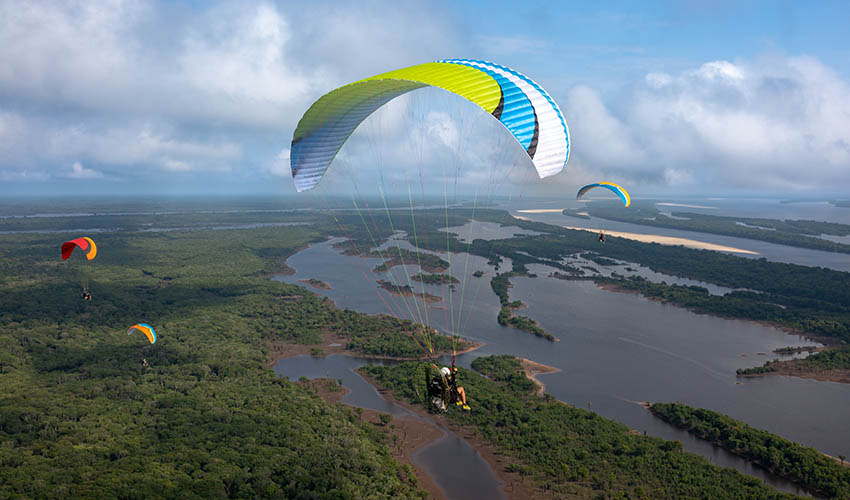
What is paramount is that recklessness has no place in a trip like that. You are out there in one of the remotest places on earth and it is truly a privilege to be there, but it asks for prudence: even with the emergency structure we set up, getting to a hospital from there is no easy ride.
For a pilot to join our trip he doesn’t need to be an advanced pilot, he can even be a beginner with 50+ flying hours. Take offs and landings are not difficult, and the air is not harsh, so it is usually safer than the conditions most people face where they are used to flying. Marilia for example did her first paramotor flight in one of our expeditions!
Finally, is there anything we haven’t covered that you want to share with pilots?
For us, flying is the only way of truly witnessing the beauty and immensity of the Amazon. Over ground there is no line of sight to show you the intricacies of the river, the sand benches and the forest playing together. There is also the cultural aspect of this trip; normally everyone leaves as friends, there is a lot of camaraderie that happens during the trip, even between clients and staff that don’t even speak the same language. Somehow this happens! And finally, the food. You can probably say that there is no other region in Brazil that has a cuisine so distinct.
We would like to thank two members of our staff that made the whole difference in the success of the expedition. Marcelo Menin, our paramotor mechanic, who is also a very knowledgeable paramotor, paraglider and hang glider pilot since the 80s and Jeferson Neves our retrieve coordinator, who is a paragliding and paramotor Instructor and also one of the pioneers in seeing the Amazon from above. He was with us in the very first expedition we did, from Manaus to Barcelos (Rio Negro), back in 2011.
And what’s the best way pilots can contact you?
You can find all our details including WhatsApp and email on our website at rumosflytrip.com. Shoot us a message!
Read Jeff Hamann’s full article in Cross Country 238 (April 2023)


